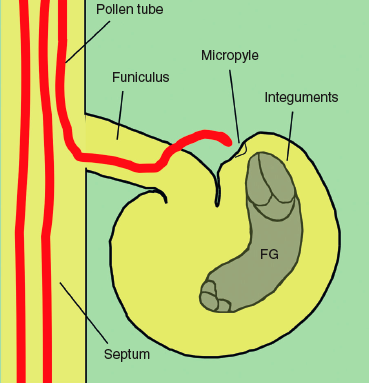News & Announcements
(July 2012)

Over the past decade, significant insights into the molecular and developmental regulation of pollen germination, growth, and guidance have been obtained. These developments warrants a comprehensive review of the entire pollen tube journey from stigma to double fertilization. Our lab has published a review article in the inagural edition of WIREs Developmental Biology.
Reference:
Palanivelu, R., and Tsukamoto, T. (2012). Pathfinding in angiosperm reproduction: pollen tube guidance by pistils ensures successful double fertilization. WIREs Dev Biol. 1:96-113.
Link to the article or download the pdf file.
Abstract of the review article:
Sexual reproduction in flowering plants is unique in multiple ways. Distinct multicellular gametophytes contain either a pair of immotile, haploidmale gametes (sperm cells) or a pair of female gametes (haploid egg cell and homodiploid central cell). After pollination, the pollen tube, a cellular extension of the male gametophyte, transports both male gametes at its growing tip and delivers them to the female gametes to affect double fertilization. The pollen tube travels a long path and sustains its growth over a considerable amount of time in the female reproductive organ (pistil) before it reaches the ovule, which houses the female gametophyte. The pistil facilitates the pollen tube’s journey by providing multiple, stage specific, nutritional, and guidance cues along its path. The pollen tube interacts with seven different pistil cell types prior to completing its journey. Consequently, the pollen tube has a dynamic gene expression program allowing it to continuously reset and be receptive to multiple pistil signals as it migrates through the pistil. Here, we review the studies, including several significant recent advances, that led to a better understanding of the multitude of cues generated by the pistil tissues to assist the pollen tube in delivering the sperm cells to the female gametophyte. We also highlight the outstanding questions, draw attention to opportunities created by recent advances and point to approaches that could be undertaken to unravel the molecular mechanisms underlying pollen tube–pistil interactions.
---------------------------------------------------------------------------------
Click here for earlier announcements
|